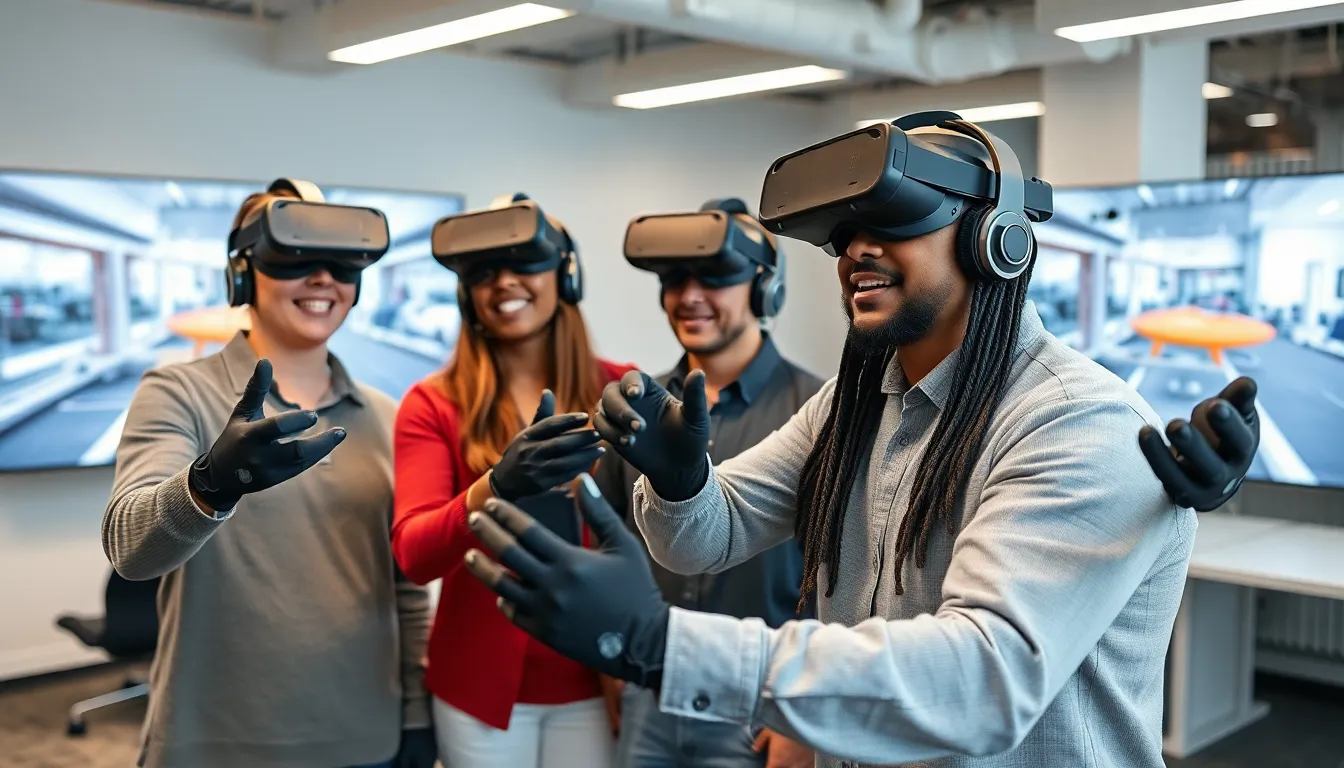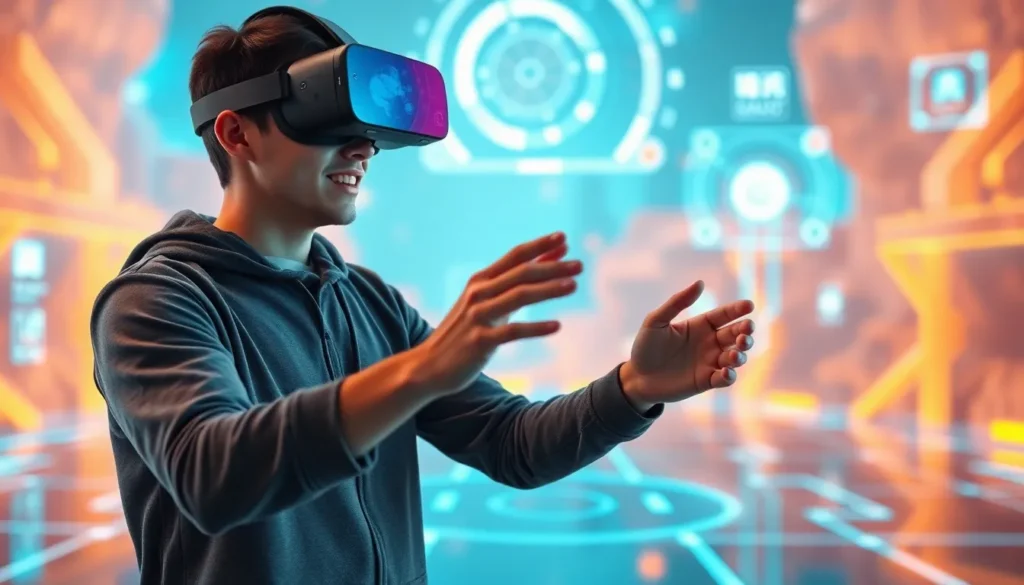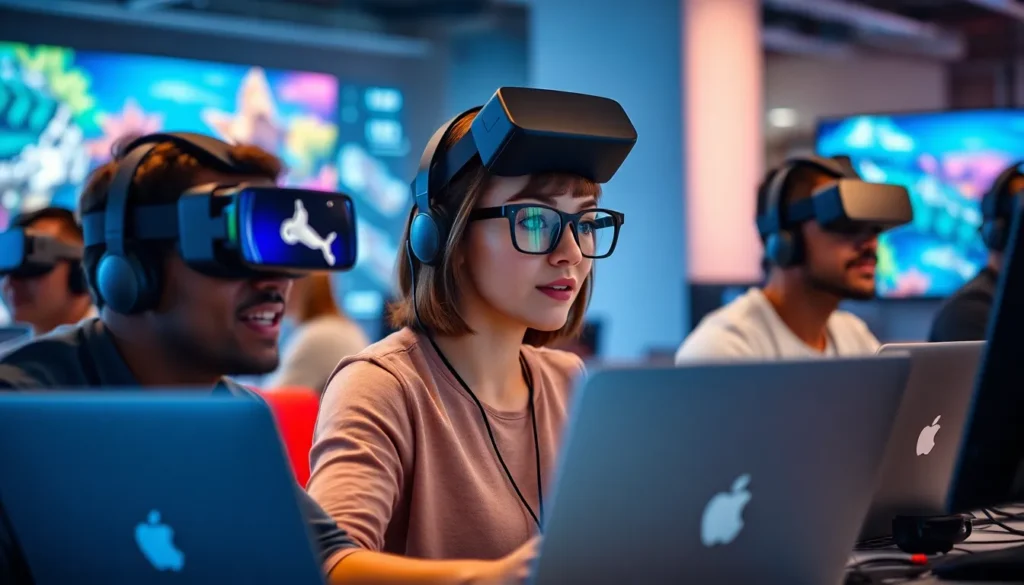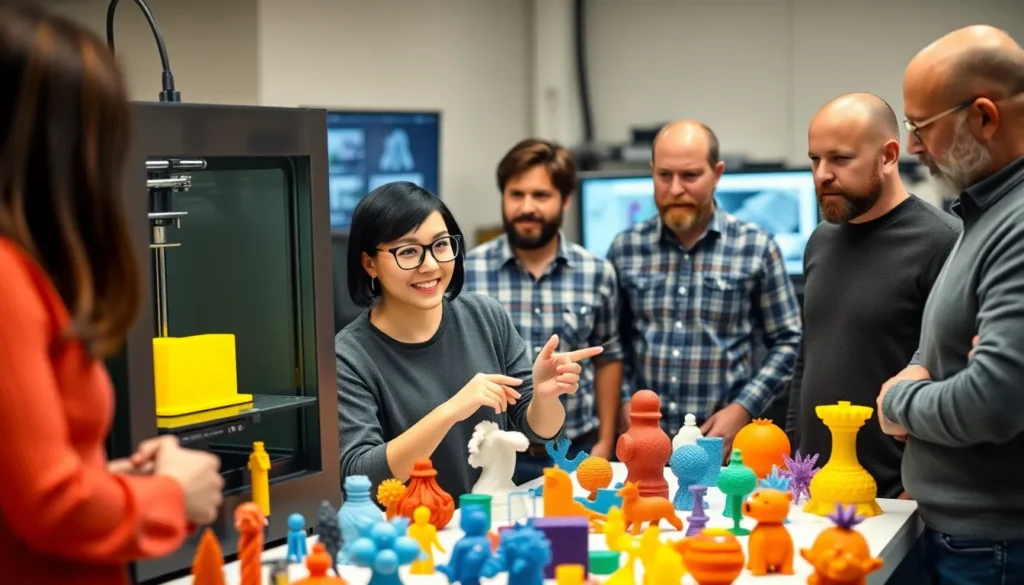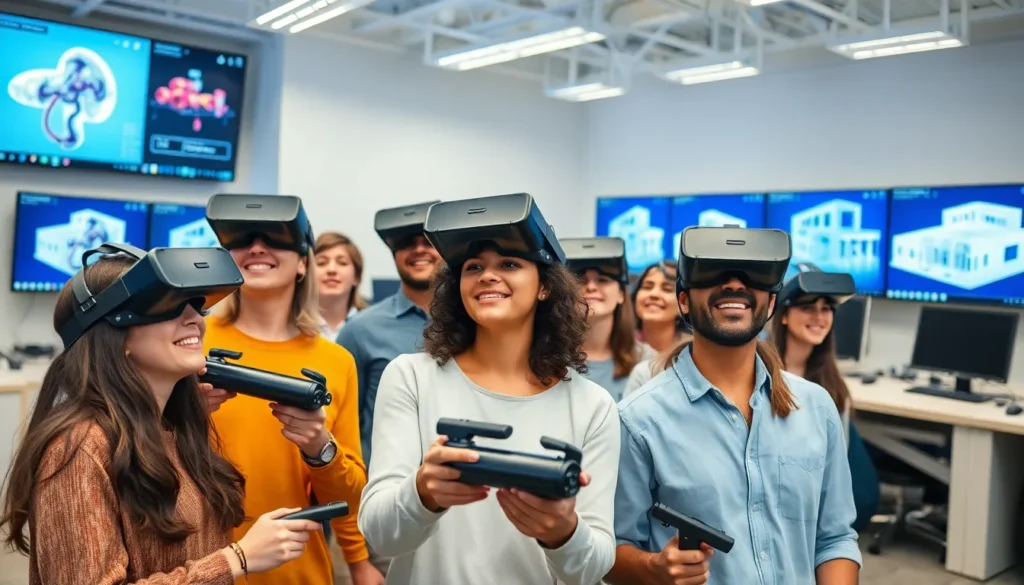Virtual reality is transforming the landscape of training simulations across various industries. By immersing trainees in lifelike environments, VR enhances learning experiences and boosts retention rates. Whether it’s for medical professionals mastering surgical techniques or pilots navigating complex flight scenarios, the potential of VR in training is virtually limitless.
As organizations seek innovative ways to improve their training programs, VR offers a cost-effective and safe alternative to traditional methods. It allows learners to practice skills in a controlled setting, reducing risks and fostering confidence. This technology not only streamlines the training process but also prepares individuals for real-world challenges, making it an invaluable tool in today’s fast-paced environment.
Overview of VR for Training Simulations
Virtual reality (VR) represents a significant advancement in training simulations, offering immersive experiences that enhance learning. Trainees engage with realistic scenarios designed to mirror real-life conditions. This engagement promotes higher retention rates, as users actively participate in their training process.
Industries such as healthcare and aviation leverage VR to provide safe and cost-effective training solutions. Medical professionals practice surgical procedures in a virtual environment, allowing for skill refinement without risk to patients. Similarly, pilots train in flight simulators that accurately replicate cockpit conditions, ensuring preparedness for actual flight scenarios.
VR simulations can be customized to reflect specific challenges that trainees might encounter. Organizations can adjust scenarios to address particular skill gaps, reinforcing focused training. The interactive nature of VR fosters critical thinking and decision-making skills, essential for high-pressure environments.
Furthermore, VR facilitates remote training capabilities, making it accessible regardless of geographical constraints. Instructors can monitor performance and provide real-time feedback, enhancing the learning experience despite physical distance. This adaptability streamlines training processes, making VR an increasingly popular choice for companies seeking effective training methodologies.
Benefits of VR in Training
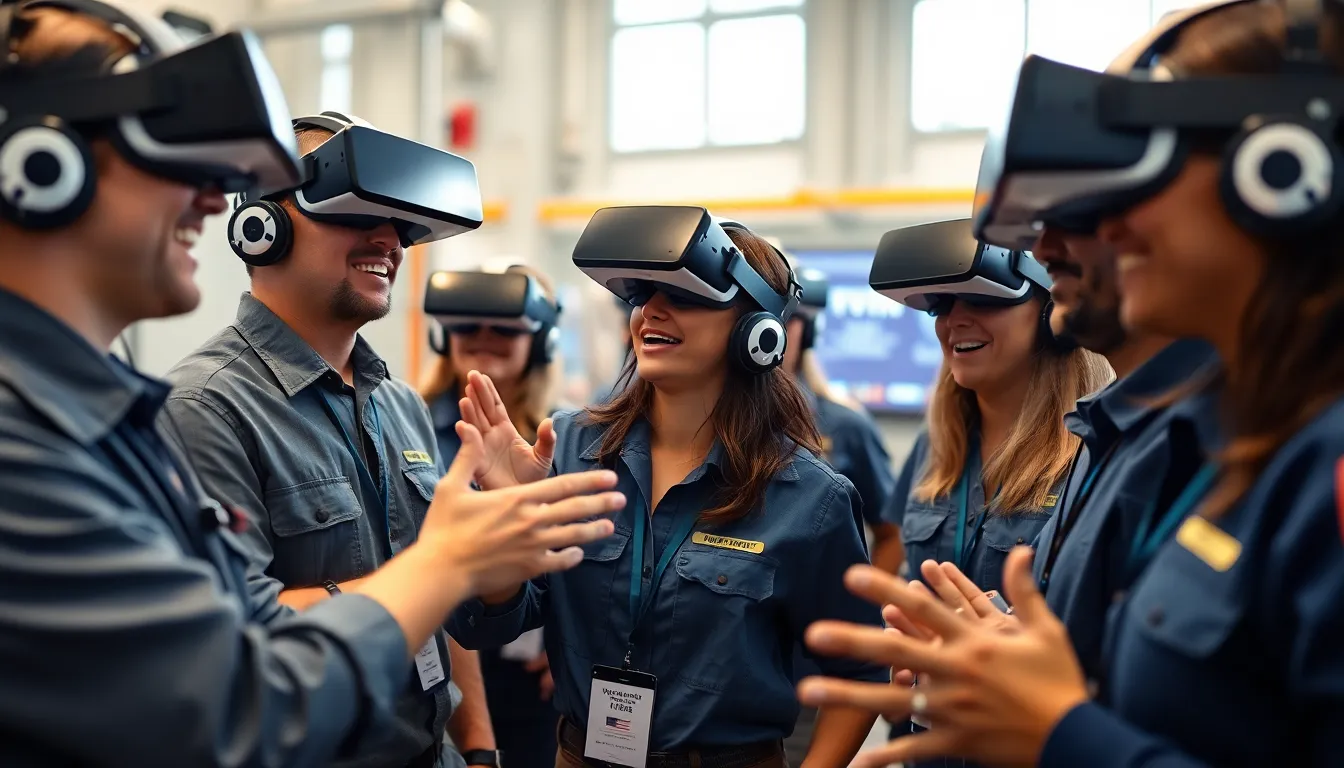
VR technology significantly enhances training outcomes through varied advantages, including improved engagement and enhanced retention. Trainees benefit from immersive experiences that make learning more impactful.
Improved Engagement
Engagement levels in training elevate when utilizing VR. Participants fully immerse themselves in realistic scenarios, capturing their attention more effectively than conventional methods. By simulating high-pressure situations, VR motivates individuals to actively participate in their learning processes. Real-time interactions within these environments foster collaboration and teamwork, stimulating enthusiasm among trainees. Increased engagement leads to greater motivation, which ultimately correlates with higher achievement levels.
Enhanced Retention
Retention rates improve substantially with the integration of VR in training. Studies indicate that learners retain up to 75% of information presented in immersive experiences, compared to only 10% in traditional lectures. By engaging multiple senses and integrating emotional responses, VR solidifies knowledge in long-term memory. Additionally, the opportunity to practice skills repetitively within a safe environment allows for mastery and deeper understanding. Ultimately, virtual reality transforms training into a memorable experience that fosters lasting knowledge retention.
Applications of VR for Training Simulations
VR finds extensive applications in various training environments, enhancing skills development and knowledge retention across sectors. Industries, including corporate, medical, and military, benefit significantly from immersive training experiences.
Corporate Training
VR revolutionizes corporate training by providing interactive scenarios that replicate real workplace situations. Employees engage in simulations that enhance soft skills such as communication, teamwork, and problem-solving. Organizations report increased employee confidence and readiness while training in virtual environments.
VR facilitates diverse training modules, including customer service, conflict resolution, and onboarding processes. Companies like Walmart utilize VR to train employees in customer interactions and emergency response protocols. Research shows that VR training can lead to 40% higher engagement levels, resulting in improved job performance.
Medical Training
In medical training, VR offers a safe platform for practitioners to hone surgical techniques and patient interactions. Medical professionals can practice complex procedures, ensuring proficiency before performing them on real patients. This technology drastically reduces the risk of errors and enhances patient safety.
Programs like Osso VR and Touch Surgery provide 3D simulations of surgical environments, enabling practitioners to repeat procedures until mastery is achieved. Studies indicate that VR-trained medical staff display a 20% increase in accuracy and efficiency during actual surgeries, making virtual reality an essential tool in modern medical education.
Military Training
Military training incorporates VR to create realistic combat scenarios, enhancing decision-making and tactical skills. Service members practice various situations, from rescue missions to tactical assessments, without the associated risks of live training exercises.
VR delivers adaptable simulations that prepare soldiers for diverse combat situations, emphasizing teamwork and situational awareness. The U.S. Army employs systems like the Synthetic Training Environment (STE) to provide immersive experiences for soldiers, improving readiness and operational effectiveness. Reports highlight that VR training reduces training time by up to 25% while increasing mission success rates.
Challenges of Implementing VR in Training
Implementing VR in training presents several challenges that organizations must navigate for successful integration. These challenges include cost considerations and technical limitations.
Cost Considerations
Cost remains a significant barrier to VR adoption in training. Initial investments for VR hardware and software can be substantial, often ranging from $1,000 to $2,000 per system. Additionally, content development expenses can add up, with custom VR training modules costing anywhere from $5,000 to over $100,000, depending on complexity and design. Organizations may face ongoing costs for maintenance, updates, and training staff to use VR effectively. For many companies, justifying these expenses against traditional training methods requires clear evidence of enhanced learning outcomes and return on investment (ROI).
Technical Limitations
Technical limitations also pose challenges for VR in training. Hardware requirements include high-performance computers and headsets, which may exceed budget constraints for smaller organizations. Software can encounter compatibility issues, while processes for creating and updating VR content may lack user-friendly tools. Furthermore, users can experience discomfort or motion sickness during simulations, hindering effective learning. Organizations need to invest in user experience research and technical support to address these concerns and ensure a smooth implementation of VR training solutions.
Future Trends in VR for Training Simulations
Emerging trends in virtual reality (VR) for training simulations indicate rapid growth and innovation across multiple sectors. Increasing integration of artificial intelligence (AI) with VR enhances personalization in training experiences. AI algorithms analyze trainee performance, tailoring scenarios to individual needs, thus improving learning outcomes and engagement.
Advancements in hardware technology significantly enhance the accessibility of VR training solutions. The introduction of wireless headsets and lightweight devices reduces physical limitations, enabling trainees to move freely in immersive environments. Companies like Oculus and HTC are developing more affordable and user-friendly VR systems, promoting wider adoption in various industries.
Cloud-based VR platforms facilitate collaboration among trainees in remote environments. These platforms allow individuals to connect in shared virtual spaces for team training exercises. This capability supports organizations in maintaining training continuity, even during disruptions like pandemics, while reducing travel costs significantly.
The rise of mixed reality (MR) is also transforming training simulations. MR merges virtual elements with real-world contexts, enabling trainees to interact with both digital and physical components during simulations. This blending aids in practical skill application, particularly in fields that require hands-on experience, such as healthcare or manufacturing.
Growing interest in gamification further enhances engagement within VR training. Incorporating game-like elements, such as rewards and competitive scenarios, encourages active participation. This approach leads to improved knowledge retention and skill mastery, making training not only educational but also enjoyable.
Adoption of VR for soft skills development continues to expand. Companies emphasize emotional intelligence, empathy, and communication by simulating real-life interpersonal interactions. VR training enables trainees to practice these skills in realistic scenarios, fostering confidence and competence in professional settings.
Investments in data analytics within VR training are increasing as well. By collecting and analyzing trainee performance data, organizations can refine training programs, enhancing effectiveness over time. Continuous improvement through data-driven insights aligns training objectives with organizational goals, ensuring impactful learning experiences.
Overall, these emerging trends in VR for training simulations demonstrate a significant shift toward more immersive, personalized, and effective training methodologies that enhance skill acquisition and retention across various industries.
Virtual reality is reshaping training simulations in profound ways. Its ability to create immersive environments not only enhances engagement but also significantly boosts retention rates. As industries continue to adopt VR, the potential for improved skill acquisition and real-world readiness becomes increasingly evident.
While challenges like costs and technical limitations exist, the benefits far outweigh them. Organizations that embrace VR are investing in a future where training is more effective and enjoyable. With ongoing advancements in technology and integration with AI, the landscape of training will only continue to evolve. As VR becomes more accessible, it promises to redefine how individuals prepare for their professional roles, ensuring they are equipped with the skills needed to succeed.

